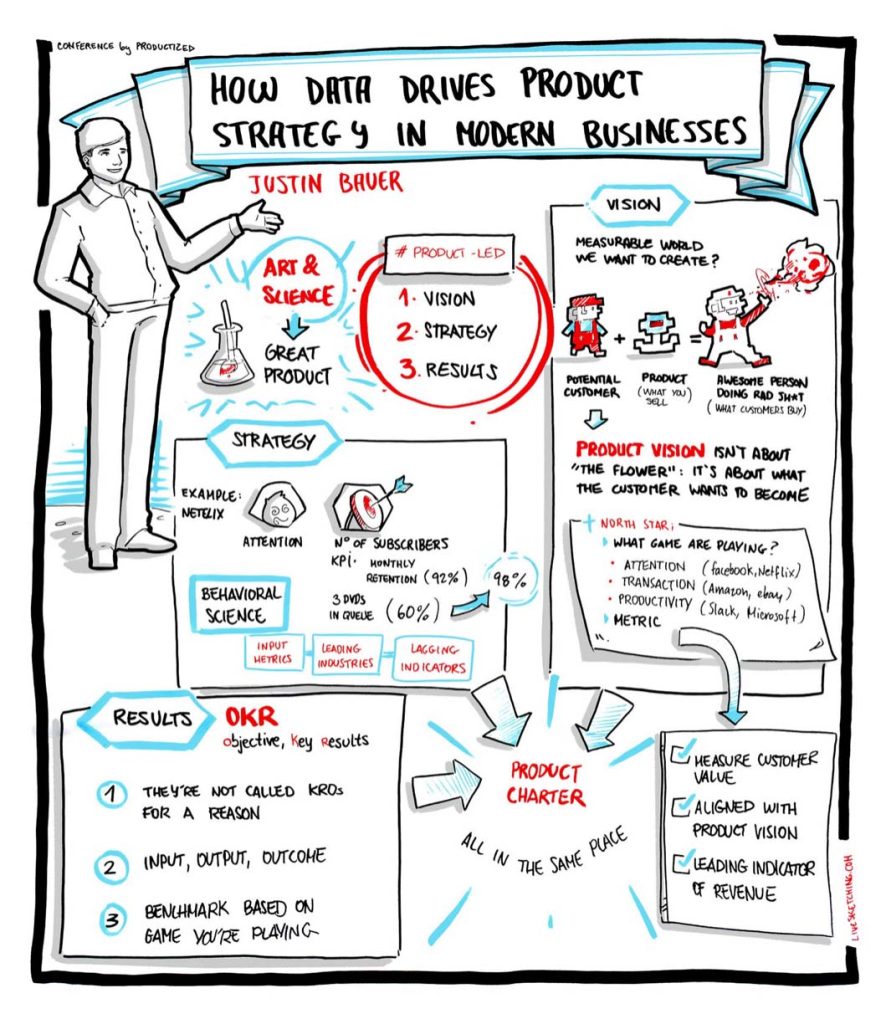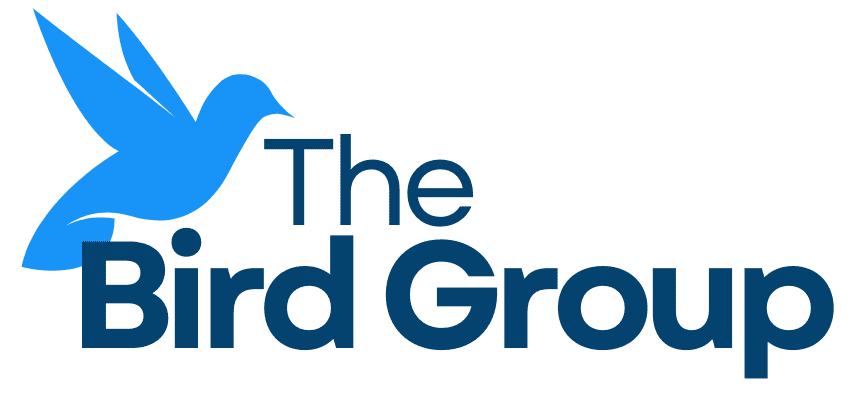By Justin Bauer
Banking is not a product-led industry; products are essential in organic growth and bank success. Data alone will not set you up for a good product, though. The combination of art and science leads towards creating a successful product. At Productized 2018, Justin Bauer from Amplitude brought these two worlds together. The summary of his talk below outlines how to use vision, strategy, and results to win.
HISTORY LESSON
Justin’s presentation started with a comparison of the pace of adoption of product strategies. As we all know, it has been accelerating rapidly.
The numbers are quite impressive, and they demonstrate how industries change. Justin claims that this change is happening in every industry where companies create innovative experiences that their customers love.
What can we learn from these companies to bring this to our industries?
First, these companies are product-led. Banking isn’t a product-led industry, but the marketing function should heed some of the principles outlined below. Justin identifies three things that every product-led company does.
1) Vision. They create clarity using clear and measurable key success metrics.
2) Strategy. They integrate behavioral science into their decision-making processes.
3) Accountability for results. They have systems that hold all elements of the company to account on the metrics needed to realize the vision.
________________________________________
1. VISION
No strategy exists without a vision. You need to know where you’re going and clearly define the destination. There are lots of definitions of what vision is.
When talking specifically about the product vision, many companies focus on the product features and functionality. A true product vision centers around what the customer wants to become or achieve.
Consider Wealthfront as an example. How does Wealthfront describe its product vision? “Wealthfront levels the playing field. Because everyone deserves an equal chance to succeed.”
This is a great description of a vision. Your market data will not tell you what to do, nor will it be the single source for answers. Data becomes useful only after you have developed a clear, aspirational definition of the vision (where you are going; only then use data to help you get there.
In true marketing fashion, you can define your own vision typically around three possible outcomes:
Attention: Get your customers to spend more time within your application. Examples include the time spent engaging with content, the number of stories viewed, the number of subscribers, etc. These are routinely used by companies such as Facebook, Netflix, and others.
Transaction: Get your customer to make a purchase or a transaction with your product. A metric example here can be the number of purchases and searches completed, number of seats upgraded, etc., used by companies such as Amazon, Walmart, and airlines. Chase is another example of a bank which uses transaction engagement metrics, particularly around remote channels, and their financial outcomes.
Productivity: How effective are your campaigns and activities? Metrics examples include records created, messages sent, queries completed, queries to applications, applications to appointments etc.
As you consider what metrics are the most appropriate for you, make sure your metric is an accurate reflection of customer value. All too often we use metrics that are easy to measure but are not necessarily associated with customers’ true views or bias for action. Our typical customer satisfaction surveys are excellent examples of such data points – they are mechanical, accurate and provide marginal insight into the customers’ true value perceptions.
Key metrics should also be effectively aligned with your product vision. They should answer the question: what do we want this product to do? Some products are aimed at reducing operating costs (e.g., bill pay), increasing customer retention (e.g., bill pay), or increasing revenue (e.g., online loan application and decision systems).
A good key metric will also serve as a reliable leading indicator of revenue. For example, understanding the relationship between calls, appointments, and sales (the “funnel”) can yield accurate revenue growth predictions.
________________________________________
STRATEGY
A product strategy is a path to deliver on the vision. It should address one or more of the elements below.
- Breadth the number of users who are doing the critical action (target customer count). For example, how many new customers will be acquired through this direct mail campaign, or the new “5 minute loan application”.
- Depth of engagement within that critical event (percent fulfilment). For example, how many times will a customer click on the phone app per month; or how many autopay events will the customer set up on billpay.
- Frequency, how often do they do that action. For example, how many times per month will the customer opt for the new app in lieu of contacting a teller or an administrative assistant.
- Efficiency, how quickly do they go through that loop and kick it off again. For example, how long does it take to check balances on the mobile app (how many clicks), and how often will the customer do that instead of calling the phone bank.
Justin backs this division up with examples from Spotify and Netflix and how they use behavioral science to identify what are the leading indicators and the metrics associated with them. If you have this understanding of your product, strategy becomes a lot easier.
AB: these indicators and product performance expectations should be validated over time, then used to reduce or repurpose number of phone bankers, tellers, commercial assistants, wealth advisor assistants etc. Similarly, one can start planning for incremental loan and deposit volumes generated through the products developed.
RESULTS
How do we measure results? It’s all about accountability to the product vision. The whole purpose of results is to objectively measure if you’re on the right path after setting the vision and the strategy. Without having a clear vision and strategy plus the infrastructure to experiment and continuously adapt, the data is useless. If you let others in the industry tell you what your key metrics should be, you might find yourself wasting resources or missing the boat by focusing on the wrong product(s).
OBJECTIVES AND KEY RESULTS (OKR)
After you’ve set the product vision, key success metrics, and initial KPIs, focus on all three elements of measurement: input, output and outcome metrics. Many teams are great at collecting user feedback as their inputs and building and shipping features as outputs. Focusing on the outcome metrics that indicate if your input/output efforts are trending positively is an important metric to include in your OKR.
In summary, effective product strategies are highly focused all around – in terms of the definition of the vision for the product, the methods to realize that vision, and the results it will achieve. Every new product or initiative should have all three elements in the product plan and key indicators testing immediately after the product launch.
Equally importantly, continuous learning and adjustments should take place after product introduction, as leaving indicators (OKRs) are examined frequently and regularly to facilitate midcourse corrections along the way.
Last, the product owner and executive sponsor should be prepared to pull the plug quickly if the product fails to achieve its OKRs and expectations aren’t met within several months of product introduction and continuous modification. Our industry is notorious for clinging on to non-performers – people, products and vendors – way too long. You can’t afford that lingering in today’s fast-paced environment.

